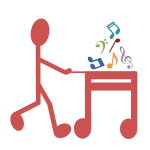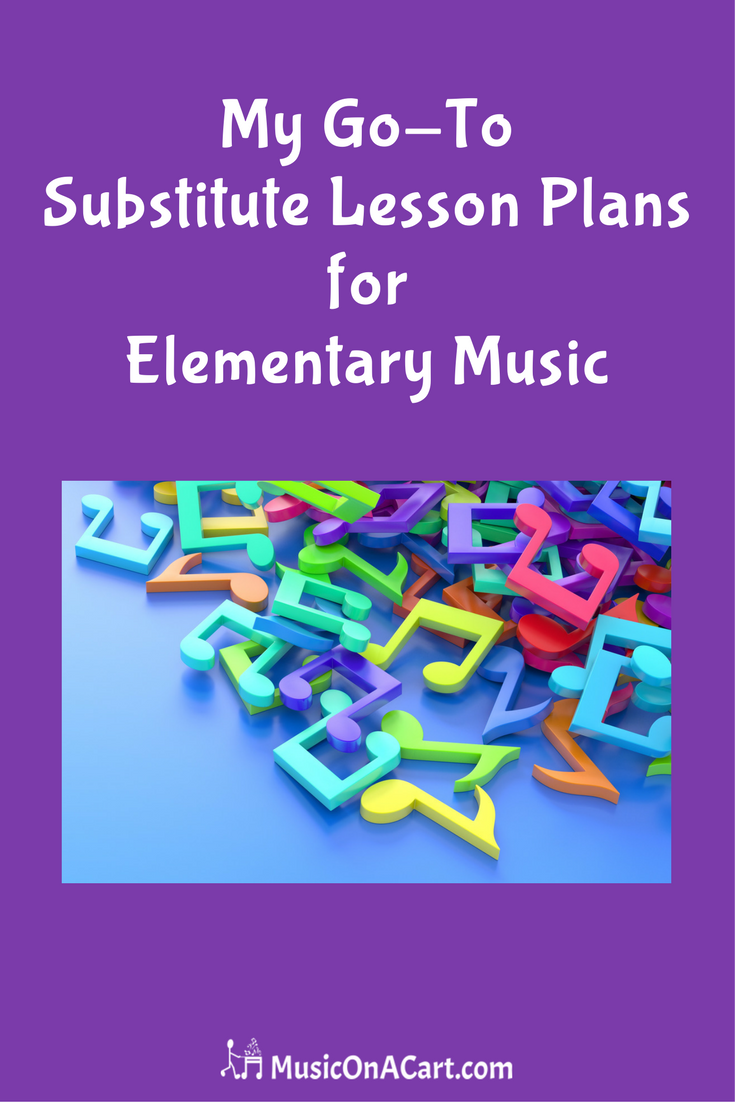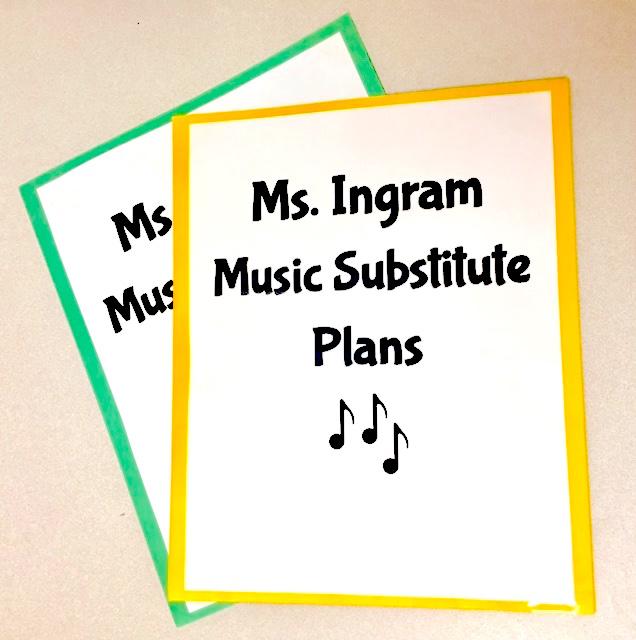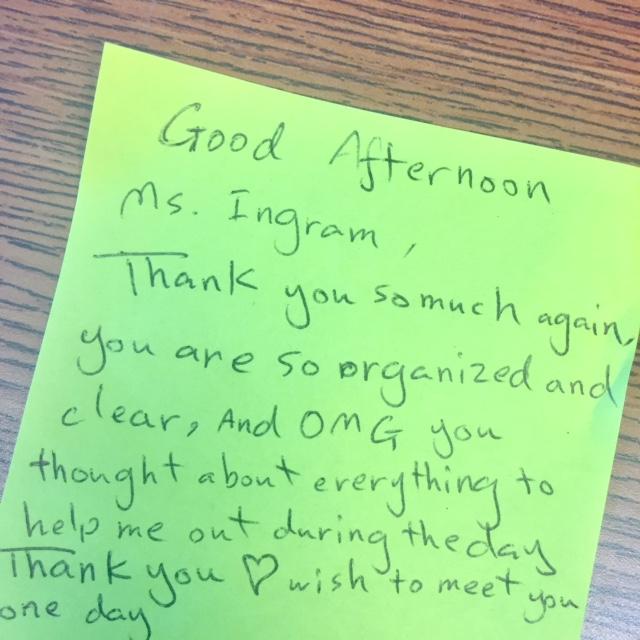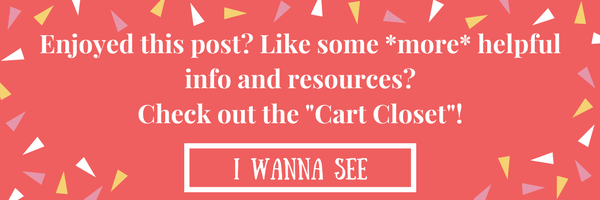It inevitably happens to every music teacher at some point in their teaching career: you have to call out absent. Whether it’s to attend a conference, an unexpected emergency occurs, or you become sick, music teachers need to plan ahead in the event they are unable to teach. But what’s a music teacher on a cart to do? Depending on your situation, your teaching materials might be scattered all over the building. Maybe you also teach at more than one school. It’s enough of a challenge for you yourself to be organized and navigate teaching from a cart, but now a complete stranger is going to step into the roll...what do you ask them to do? Let’s tackle some key things to plan and prepare so your substitute can be successful filling in as a “music teacher on a cart” for the day. Also, keep reading to find out my top go-to substitute music lesson activity!
Placement of Plans
First, decide on a designated place to leave your substitute lesson plans. If you have a prep space (which I've previously mentioned you should highly advocate for), that would be best. Another option could be to leave a “Substitute Music Lessons” folder with the secretary in the main office of your school(s) or in your faculty mailbox if the sub has access to that space. The online substitute request system my district uses allows me to leave a short digital note for the substitute that accepts my placement, so that's where I state exactly where to find my lesson plans once they arrive at whichever school they’re filling in for me that day. I also let the secretaries know at each school I teach at where my sub lesson plans are located.
Non-lesson Info
Other than the actual lesson plan, you also need to leave important information such as:
- Schedules- I always like to reformat the original schedule I’m given at the beginning of the school year to make it easier for me to read and for my substitutes to understand, too. I make sure that the period times, teacher names, grade levels, and room numbers are clearly shown in an easy to read (and color-coded!) table. I include a copy of a regular day schedule, a delayed opening schedule, and an early dismissal schedule and highlight those titles with different colors so the subs see right away that they are all different. I make multiple extra copies to keep for myself in case a sub takes the schedule with them at the end of the day or they jot their notes on it. Lately, I've added a short, simple note at the top that asks for them to return the schedules to the folder once finished for the day and so far I haven't had any problems with it disappearing.
- Class Rosters- I don’t have seating charts, so I simply group and staple my class lists according to the day of the week that they have music. I keep it updated by writing in new students names as they come during the school year.
- Emergency Procedures- This includes school protocols regarding safety and weather related drills and emergencies. It outlines what subs need to take with them, where they need to go (inside classrooms and outside the building), and any code words they need to listen for. If you think including a school map is helpful, then by all means include a copy. Every classroom in my district has the evacuation route drawn and posted at each classroom door, so I don’t include that specific info.
- Classroom Rules- How many students are allowed to go to the bathroom at a time? What’s the rule about water fountain drinks? Are students working towards a class or behavioral goal? Be sure to briefly outline and address all of those questions.
With all of those details taken care of, we now get down to the true nitty-gritty...the actual lesson plan. Before detailing the lesson activities, I clearly state at the top of the lesson plan page that the sub will be traveling to the classrooms for each class period. I then list any materials they'll need to bring with them for the lessons. Even though my subs have a copy of the schedule, I still outline all key info (class period time, teacher, grade, and room number) on the lesson plan. I’ll also detail any bus or lunch duties if it applies for the selected day and where they can go in the building to eat their lunch or sit to rest during the prep/free period.
And the big question: Do I have my substitutes push my music cart from class to class?
My personal answer is….no. Now, I do know music teachers on a cart who do leave lesson plans that require their subs to push their carts. I instead choose to utilize lesson plans that don’t require lots of materials. Simple is best. I leave a large, durable music tote bag that contains the materials listed in the lesson plan and at the bottom of the lesson plan I ask them to please return the bag and all its contents to the same place they picked it up from before they leave for the day.
I approach my substitute lesson activity planning from the standpoint that my subs won’t have access to interactive whiteboards or other technology. Music takes place during the teacher’s prep time and if those teachers are on their laptops or computers working, that sometimes leaves no access to the interactive whiteboards. And I don’t leave any of my technology (mp3 players, tablet, laptop) at school because they are my personal equipment that I’ve paid for out-of-pocket. I also plan from the standpoint of my subs not having any music knowledge whatsoever, so I look for enriching lesson activities that are as straightforward and easy to execute as possible. One of those top go-to lessons I like to use are:
I incorporate some aspect of focused music listening quite often (usually monthly) for all grade levels that I teach. When it comes to substitute music plans, listening lessons are a great way to encourage independent work, spark group discussion, and fill the entire span of a (in my case, 45-minute) class period. The materials needed are minimal (simply a CD, CD player, and paper), so the sub can utilize the tote bag I leave for them and easily bring those materials from class to class. Students use the pencils and crayons already in their classrooms and each classroom teacher has their own CD player, eliminating additional items that would otherwise need to be brought!
For my lower elementary students, I leave blank, legal-sized paper (8.5 x 14 inch) that they can fold either in half to make 2 boxes on the front and 2 on the back to draw in, or fold twice to make 4 boxes on both sides. Using one box per music selection, students draw what they think the music is about, what instruments they think they hear, and/or what they think the instruments are trying to sound like. In the lesson plan, I give the parameters that students must listen to the first minute of music without talking or drawing/coloring. Then they're given X amount of minutes to draw their idea before the substitute selects several students to share their picture and explain it to the class. The final step is the substitute revealing the composer and official title of the music. Those steps are repeated for each box on their paper until either all students have had a chance at some point to share or the music period comes to an end.
My upper elementary listening lessons follow the same steps of listening, writing, drawing, and sharing, but they use a more structured worksheet with questions that encourage them to use the elements of music as their guide to write and describe what they hear (tempo, timbre, dynamics, etc.). An online search for "music listening logs," "music listening worksheets," or "SQUILT" (Super Quiet Uninterrupted Listening Time, an acronym coined many years ago by the Music K-8 Magazine resource) will bring up examples for you to see what such a worksheet might look like.
Aside from listening lessons, there are other activities that I like to leave as music sub lesson plans. Check out the Cart Closet for a 2-part video series in which I share those resources AND while you're in there, grab a FREE sample listening lesson plan that you can use for your elementary music classes!
Have you tried listening lessons before as either a regular lesson plan or a sub plan? Do you have any "go-to" music sub plans that you absolutely love? I'd love to hear about it in the comments below!
Encouraging you to rock as you roll,
Connect:
